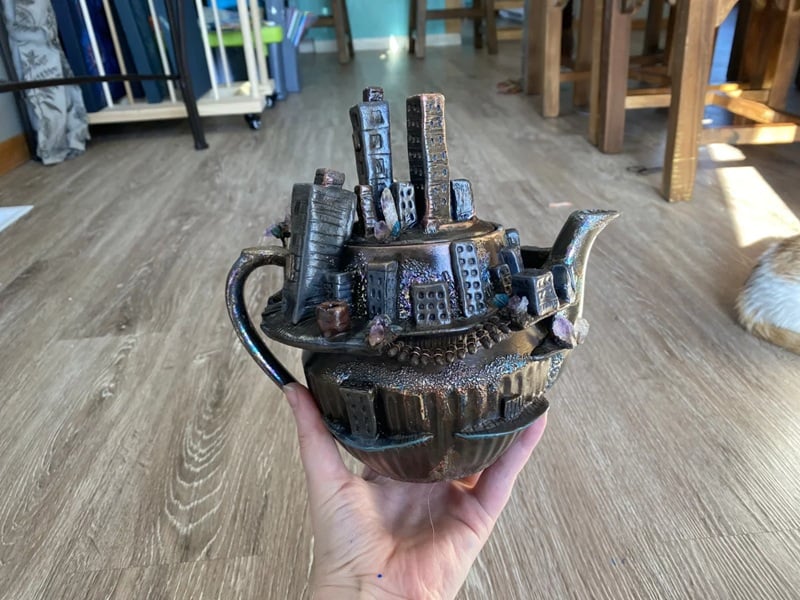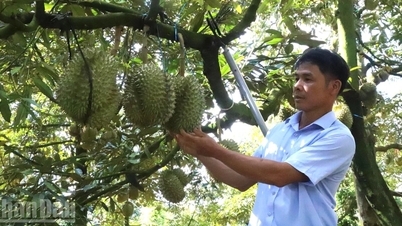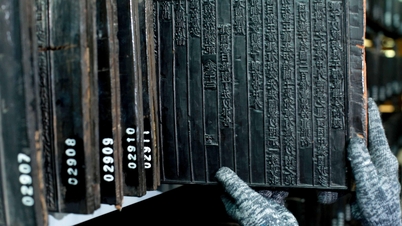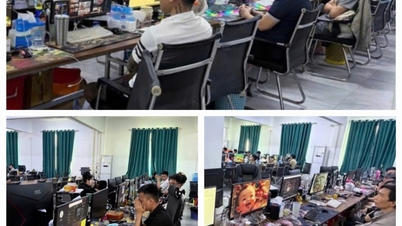 |
| A teapot with a miniature abandoned city built on it. Photo: NPR |
On the phone screen, a pair of giant hands are cooking in a tiny kitchen: a button-sized egg is frying on a miniature pan, the fire is flickering from a small candle. According to NPR (USA), social networks are flooded with images of people patiently recreating tiny kitchens, where they cook eggs with the warmth of a candle. All of these images are not animations, but miniature art that is going viral on TikTok, where the boundary between reality and virtuality is blurred in the 1:12 scale world .
Control and feat
Miniature art has become especially popular during the Covid-19 era, as artists have begun sharing their tiny models and meticulous crafting techniques. Those involved say the pandemic has fueled this wave of creativity. “It’s definitely about control,” Amanda Kelly, a miniature artist and the first artist-in-residence at the Mini Time Machine Museum of Miniatures in Tucson, Arizona, tells NPR. “Like when you play The Sims or a simulation game, you control everything that happens in the little space that you create.”
The Sims is a computer simulation game in which players create and control virtual characters (called “Sims”). But according to neuroscientist Susana Martinez-Conde (Downstate University of Health Sciences, New York, USA), the appeal of miniature art comes from more than just the feeling of control. “We are drawn to scenes that are full of visual information… These tiny miniatures are like candy for our visual system.”
The feat of miniature art is evident in Rhode Island artist Thomas Deininger’s Macawll of the Wild (2024), on display at Art Miami. From the front, it appears to be a green-and-yellow macaw perched on a tree branch. But as the viewer moves, the sculpture reveals an optical illusion: it is composed of such mundane objects as a naked doll, a plastic palm tree, an unpeeled plastic banana, a bottle cap, a No. 2 pencil, and a tangled tape measure.
The work, valued at $60,000, quickly went viral after a woman filmed it and posted it on TikTok. According to The New York Times, the video reached 16 million views by noon on May 11, increased to 50 million by 3:30 p.m., 90 million by 6 p.m., and now has more than 118 million views. Marina Totino, an artist from Montreal, Canada, told NPR about the patience required to “play” with this art form: “Making miniature models takes a lot of time. I often glue my hands with super glue, drop things and can’t find them because they’re so small, so I have to start over.”
Telling tiny stories
Miniature art is not only about recreating tiny objects, but also about telling stories without words. In the works, people are often absent, only the artist’s “giant” hands and miniature scenes that connect to the story behind.
“You can slow down, think about small stories, and immerse yourself in the world you want to create,” Ashley Voortman, author of Creepy Crafts: 60 Macabre Projects for Peculiar Adults, told NPR. Meanwhile, Marina Totino takes viewers back to their childhoods with nostalgic scenes from the 80s and 90s. “I love recreating spaces that once existed but will never exist again,” she said. One of Totino’s signature works is a shoebox-sized video store with hundreds of tiny DVDs, graffiti-covered brick walls, and a “Sorry we’re closed” sign slanted under the door. The mirror effect makes the shelves seem endless. “May the memory of renting movies last forever, as far as these hallways lead,” Ashley Voortman writes on her website, explaining the appeal of miniature art. “Everyone loves tiny things,” she said.
The tiny scale, typically 1:12, also makes crafting particularly challenging. “You have to be a Renaissance man, a carpenter, a recycler,” says Amanda Kelly. Voortman often starts with a vague idea, then dumps all the craft “trash” in front of her and starts piecing it together. From bottle caps, old soy sauce bottles, and miscellaneous decorations, she has created tiny haunted houses in matchboxes and entire abandoned cities on top of teapots.
The miniature art community is as open as their imaginations. Artists meet at exhibitions, conferences, and mini markets across the country. “Your miniature world doesn’t have to be perfect. Even if it’s just paper or cardboard, it’s still art, a world all yours,” Totino said.
This trend also reflects the aesthetic flow on TikTok in 2025 that Apple.com once mentioned as the “AI Art Generator” movement. But unlike AI-generated digital paintings, mini art affirms the return of the hand to real, touchable, and feelable objects.
Mini art and the power of social media |
Despite its long history, miniature art has only truly become a global phenomenon thanks to social media. Thomas Deininger’s Macawll of the Wild is a clear example: it went from a little-noticed corner of Art Miami to a TikTok phenomenon with 118 million views in just a few hours. Platforms like TikTok are also reshaping the way art is viewed. In the “Mindful Minute” trend predicted by Apple.com for TikTok in 2025, users are encouraged to take a moment to pause in the digital world. Miniature art, where every little detail is taken care of, is becoming a form of visual meditation, helping viewers find a sense of peace in a turbulent world. |
TRAN DAC LUAN
Source: https://baodanang.vn/channel/5433/202505/vu-tru-nghe-thuat-ti-hon-4006943/



![[Photo] 60th Anniversary of the Founding of the Vietnam Association of Photographic Artists](/_next/image?url=https%3A%2F%2Fvphoto.vietnam.vn%2Fthumb%2F1200x675%2Fvietnam%2Fresource%2FIMAGE%2F2025%2F12%2F05%2F1764935864512_a1-bnd-0841-9740-jpg.webp&w=3840&q=75)
![[Photo] National Assembly Chairman Tran Thanh Man attends the VinFuture 2025 Award Ceremony](/_next/image?url=https%3A%2F%2Fvphoto.vietnam.vn%2Fthumb%2F1200x675%2Fvietnam%2Fresource%2FIMAGE%2F2025%2F12%2F05%2F1764951162416_2628509768338816493-6995-jpg.webp&w=3840&q=75)



































































































Comment (0)